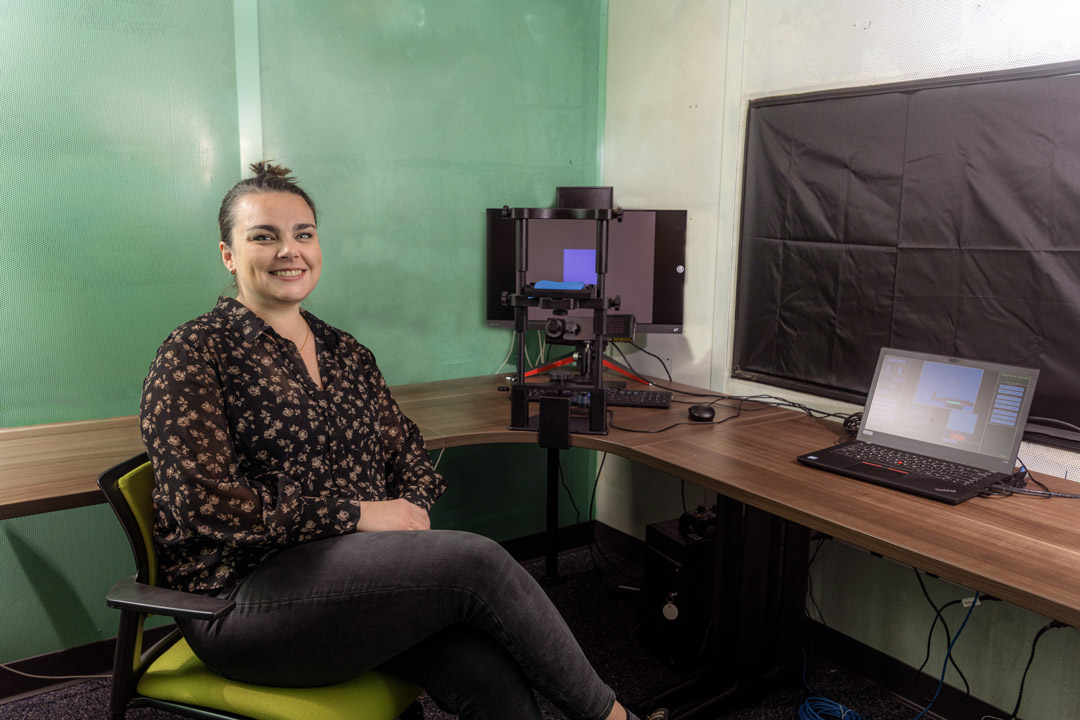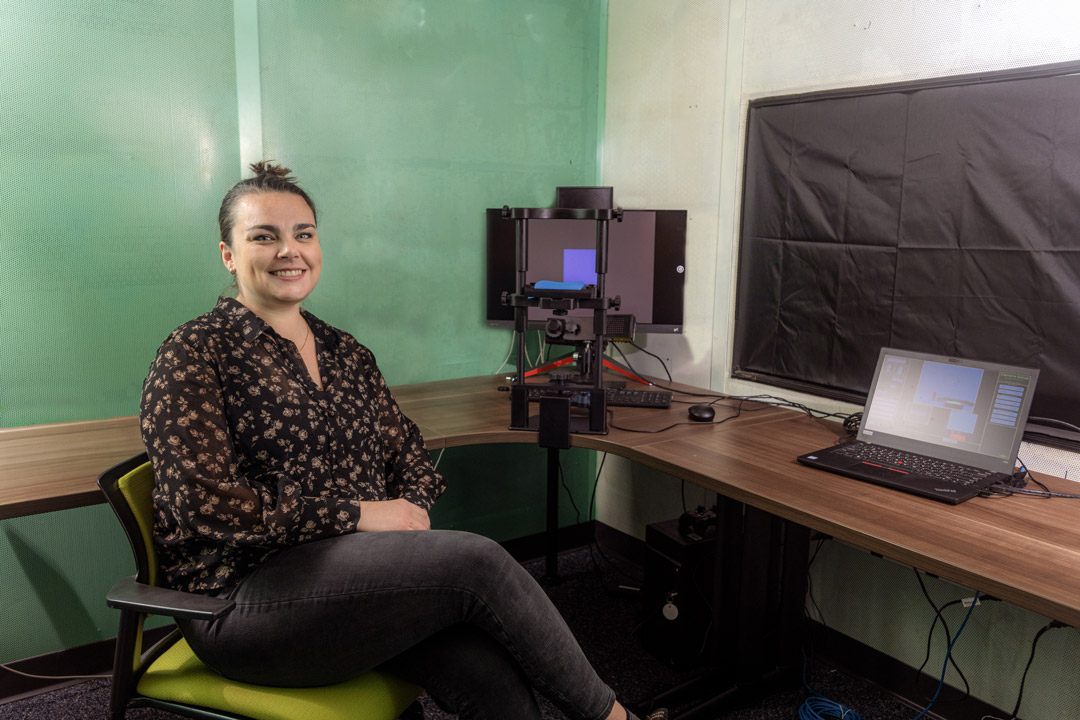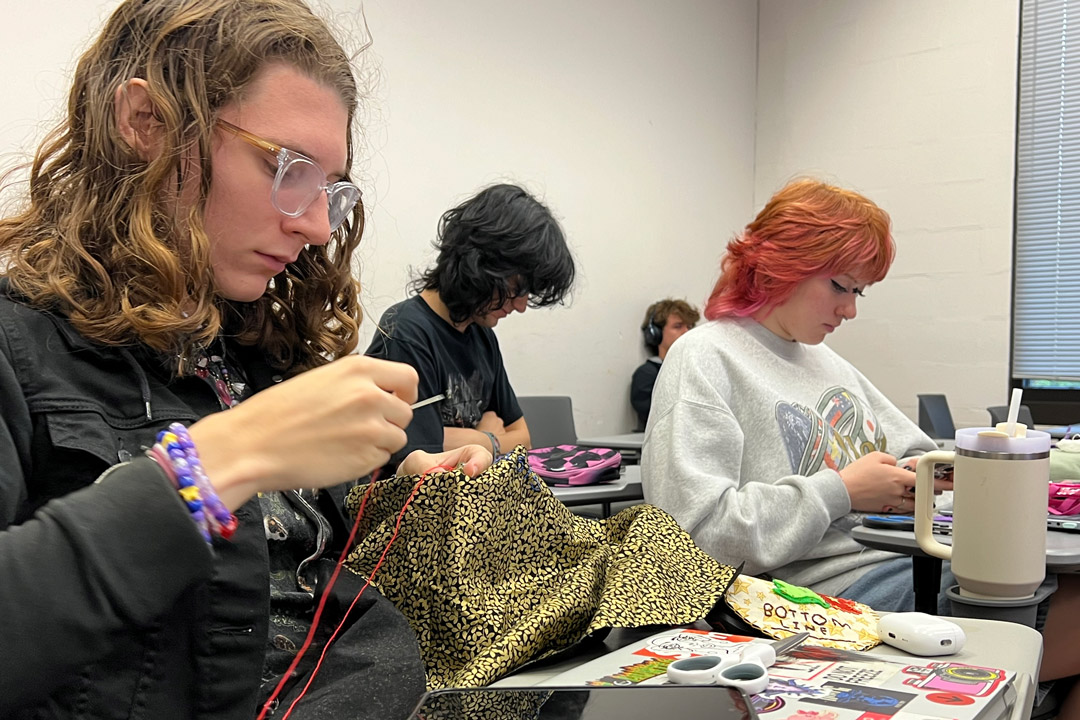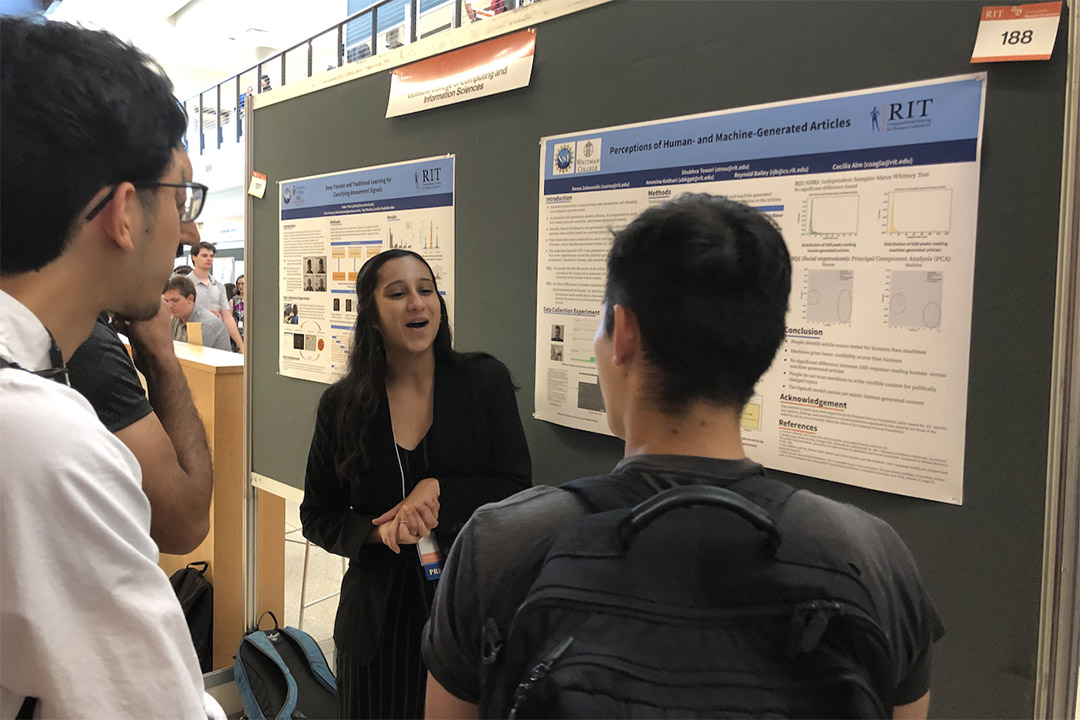November 6, 2025
by Susan Murad
NIH grant will be used to study early ASL users and their reading development

Matthew Sluka/RIT
Assistant Professor Frances Cooley leads NTID’s Reading and Deafness Lab.
Researchers will soon use eye-tracking to show how deafness impacts vocabulary knowledge and reading as well as how deaf and hard-of-hearing children, who have historically shown lower than average reading outcomes, develop into highly skilled readers.
Frances Cooley, an assistant professor in NTID’s Department of Liberal Studies, received a nearly $500,000 grant from the National Institutes of Health to study how vocabulary knowledge in American Sign Language supports English reading development. Using eye-tracking, ASL and English assessments, and cognitive assessments, Cooley will examine how first-language knowledge shapes second-language reading comprehension and eye-movement control.
The findings will have important implications for theories of reading development and for educational practices that support bilingual learners.
“Our goal is to have an impact on early language and educational practices for deaf and hard-of-hearing children so they’re able to achieve educational success as it pertains to literacy,” Cooley said.
Cooley leads the college’s Reading and Deafness Lab, which focuses on understanding how deaf and hard-of-hearing children and adults develop reading skills. The lab uses eye-tracking, behavioral language testing, and advanced statistical modeling to examine the processes behind successful reading in people who learned American Sign Language before or after acquiring their reading skills.













